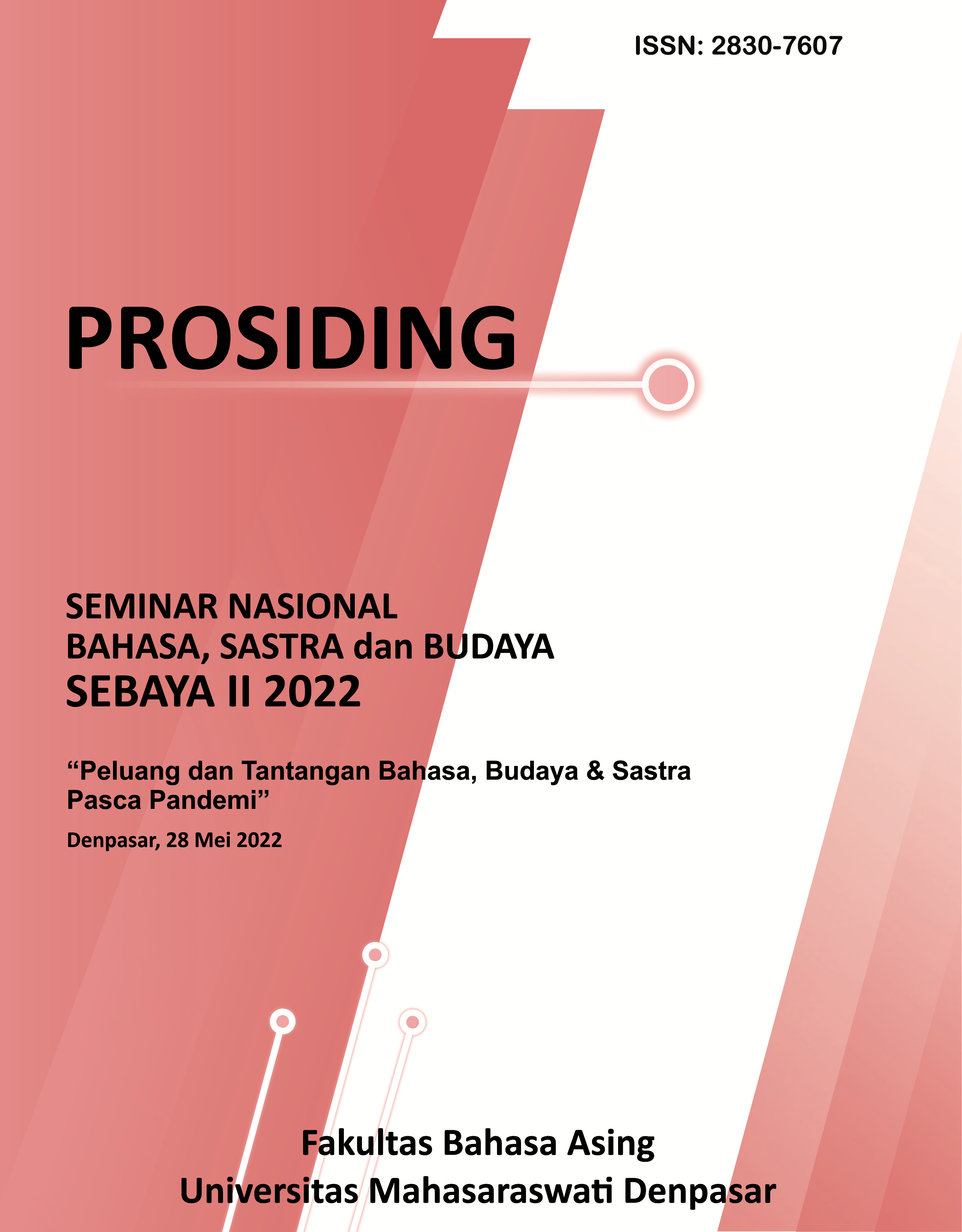PENGGUNAAN DAN MAKNA LEKSIKON ‘TENANG’ DALAM RUIGIGO BAHASA JEPANG
Keywords:
meaning, use, calm, ruigigo,Abstract
Japanese is a foreign language that has many variations of the lexicons. Usually, the lexicon variations that are often encountered are variations in verbs, adjectives, and adverbs. This article discusses the meaning and use of the 'calm' lexicon in everyday Japanese ruigigo. The data in this article are sentences used by native Japanese speakers. Data was collected through interviews and note-taking techniques. The data were analyzed using the Pateda (2010) contextual meaning theory approach. Based on the results, there are four variations of the 'calm' lexicon in Japanese, namely odayaka, shizuka, ochitsuku, and reisei. Lexicon odayaka, shizuka, and reisei are included in the na adjective category, while ochitsuku is included in the verb. By its meanings (1) Odayaka states a calm state of a place, such as: the sea, village, and others. Odayaka also states a calm state of feeling like speaking, seasons, wind, music, and life, (2) Shizuka states a calm state or activity, such as the flow of a river, mountain climbing, death, sleeping, relaxing, and focus when working or studying. (3) Ochitsuku expressed a calm feeling when listening to the sound of the rain and sat down leisurely. (4) Reisei states an action or calm feeling within a person.

